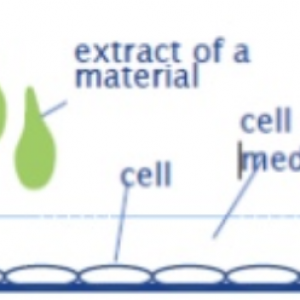Hemocompatibility testing is designed for medical devices contacting circulating blood. Biomaterials that contact blood could have cellular effects and humoral effects including thrombosis, embolism, activation of the coagulation, etc. For devices contacting with circulating blood, hemocompatibility testing is generally required as a biocompatibility assessment.
STEMart offers multiple test types for Hemocompatibility biocompatibility testing including hemolysis, in vitro coagulation, in vivo thrombogenicity, and complement activation following the biocompatibility guidelines modified for medical devices.
Hemocompatibility Testing for Medical Devices
The hemolysis (plasma hemoglobin) test is regarded as an especially significant screening test to perform in biomaterials of a medical device that have direct or indirect circulating blood contact as its measuring the red blood cell membrane fragility. The method used is one of the normative standard test methods for hemolysis.
The hemolysis testing including circulating blood loops and the single pass-through assays.
- Circulating Blood Loop: Circulating blood by a peristaltic pump and forming a constant loop through the medical device.
- Single Pass-through assays: Streaming blood through the medical device without recirculation.
The partial thromboplastin time (nonactivated) test is a general screening test used to evaluate the detection of coagulation abnormalities in the intrinsic pathway. This test is performed on devices or materials that have direct circulating blood contact.
The in vivo thrombogenicity test determines a relative thrombo-resistant for medical devices contacting circulating blood, this test helps manufacturers to define whether the medical device causes harmful effects on humans. Light microscopy (adhered platelets, leukocytes, aggregates, erythrocytes, fibrin, etc.) are used for thrombosis test, light microscopy can be replaced by scanning electron microscopy if the nature of the material presents technical problems for light microscopy.
The activation of complement is a humoral immune response that may be induced by the invading of foreign material into the body and can lead to adverse effects such as inflammation. The complement activation test is used to evaluate the potential of complement activation by a medical device. The test is performed by incubating the test article and predicate in human serum and subsequently tested for the presence of the complement protein SC5b-9. This test is designed for medical devices that have interactions with blood to meet the immunology testing requirement.
The analysis of leukocytes activation can be used for evaluation of inflammatory response induced by biomaterial. In order to comprehensively analyze the activation of leukocytes, several parameters including generation of reactive oxygen species (ROS), release of PMN elastase, expression of CD11b on the surface of leukocytes, and production of neutrophil extracellular traps (NETs) are determined.
If you have additional questions about Hemocompatibility Testing or would like to find out more about our services, please feel free to contact us.
Reference
- Weber, M, et al. “Blood-contacting biomaterials: in vitro evaluation of the hemocompatibility.” Frontiers in bioengineering and biotechnology6: 99 (2018).



